New lifted springs don't cause axle wrap, but because of the increased arc, they usually have a rough ride and have less articulation. Luckily, Offroad Design has a solution for this; They have a kit that flips the rear shackle upside down. Hence the name "Shackle flip kit". By reversing the shackle, you gain 4" of lift. They also make a 2.5" flip kit if you desire a smaller lift.
This turns the factory rear tension shackle into a compression shackle for 2.5 or 4 inches of lift without using blocks. This kit is much stronger than the stock hanger. Thicker ¼" plate is welded to gusseted brackets to provide super strength. The kit bolts to factory holes with Grade 8 hardware for a stronger than stock mounting system. Also, the shackle mounting point is moved forward to correct the new location of the shackle. This is the reason the brackets don't look "straight" compared to stock. If you desire a 6" lift, just run the flip kit with 2" springs or blocks. 8" lift would only require 4" springs and so on.
|
The flip brackets are made out of thicker ¼" plate and
welded to gusseted brackets to provide super strength. Grade 8
bolts are also included. The shackle point is moved foward to bring
the shackle into the proper position.
Click for larger
image
|
Benefits:
-
Up to 4" of lift
- Smooth stock ride
- Stock springs can be used
- Eliminates axle wrap from blocks
- Can be used with lifted springs to combine total lift
- These do fit trucks with 56" rear leafs.
- Installation requires removing the rivets from the factory frame brackets by air chisel, grinder, or your favorite other method. At that point, the holes are drilled to clear the bolts and the brackets are bolted on. This will most likely require removing the gas tank on Blazers and Subs.
- Pinion angle is a popular question with this kit. The quick and easy answer is that there is no quick and easy answer. Proper pinion angle depends on drivetrain length, wheelbase, gears, tires, vehicle speed and more. It usually boils down to what works for your truck. In general, the shackle flip sets the pinion angle about right for most 4" to 6" lift Blazers and shortbeds, especially the later models with the aluminum transfer cases. Longbeds and Suburbans will probably (but not always) need to shim the pinion down a few degrees for minimum vibration.
- Load carrying ability is also a common question. Basically, if you keep the factory overloads, you won't have any trouble.
- 56 inch rear springs are not a problem for the flip kit.
The angled gussets go the rear and the shackle hanger should be towards the front. In the past, 6" springs were installed so we already had the proper items for this. If this flip kit is replacing a stock a lift, be sure to get extended brake lines, longer shocks, new locking nuts for the u-bolts and anything else that could be required. If blocks are coming off in favor of the flip, you will need new u-bolts which Offroad Design also carries. Also keep in mind that driveshaft and exhaust modifications may be necessary. The next thing to consider is safety. This is an important step that some tend to forget about.
Always wear protective clothing, gloves and safety glasses. An extra set of jackstands is good to have for backup. Nothing is worth get hurt over. Since the gas tank of our Blazer is located next to the spring brackets, it needs to be removed. Trucks won't need to do this step. The fuel pump was electric, so we hooked up a long tube and a gas can to the fuel line and turned the ignition on. It's much easier to remove a lighter tank. You may be able to make enough room simply by hinging the tank around the front mounts but we wanted to clean off any noticeable rust and spray some rust preventive paint on the frame. The gas tank is also cleaned up and painted as well.
If you have an in-tank fuel pump and have a few miles on it, you may want to consider replacing it now. The rear of the frame is raised and is up on solid jackstands and blocks are placed in front of the tires. Usually you need it fairly high since you are lifting the truck. Strong stands are used on sturdy parts of the frame. The tires are removed and the floorjack is placed under the axle. The stock shackle and leafspring is removed from the rear hanger. To do this the spring and axle had to be separated. The spring was removed from the mount. When bolts are removed from these components, we must make sure there's not any weight on them.
|
Drilling may not be the quickest but it finally got all 12
factory rivets out. A small bit was used followed by a larger drill
bit. Click for larger image |
Once the spring is out of the way, the stock spring hangers are then removed. There are several methods to removing the rivets holding them on. An air chisel will cut the heads off or they can be ground with a grinder cut with a torch. We chose the drill method. This was not the easiest or fastest way but it got those rivets out. If we had access to a torch, that might have been the preferred way. If anyone chooses to do this and uses the torch, please remember to check for the wires on the other side. Roasting your taillight wiring would be bad enough without burning down the truck! Always check the inside of the frame well. After the rivet heads are painfully removed, the shanks had to be punched out though the frame. This took several blows with a good size mini-sledge and large punch.
|
The bottom bracket and 2 rivets are left. After the rivet
heads are removed, a punch and a large hammer is used to drive the
old shanks out. Click for larger image |
After the rivets were punched out and a long break was taken to rest (those rivets were tough), the frame holes were then enlarged a little to accept the 7/16 bolts. The frame was then cleaned up with a wire brush to remove any rust and a good coat of rust preventive paint was used to protect it. After the paint dried, we installed the brackets (on the correct side) and used the provided grade 8 bolts with one washer on each side and the pinchlock nuts. The bolts are then tightened to 45 lbs.
|
The brackets are installed using the supplied high grade
bolts. Click for larger image |
Now it's time to install the shackle. No big deal
right? WRONG! The stock shackle was seized to the bolt which was
still mounted in the factory hanger. A press could of done the job
but we had no access to one at the time. We then tried penetrating
oil and a large hammer with no luck. Heat was finally used and it
still took tremendous hammering force to remove it. Looking at the
corroded bolt and sleeve, we decided to get new greaseable bolts
and bushings for the shackle. Once again, Offroad Design came to
the rescue and quickly shipped the parts off. The stock shackle
bushing was a pain to remove but it eventually came out. Since we
had new springs we didn't need new bushings but if your bushings
are old and cracked, now is a good time to do this. Old spring
bushings can be drilled out using a 1/8 or 3/16 bit on both sides.
This should loosen the inner sleeve to the point where it can be
driven out with a hammer. The next step is to pry the rubber out of
the spring eye, usually in pieces and remove the outer sleeve. Use
a chisel or saw to split the outer sleeve and drive it out. The new
bushings are then installed with plenty of grease and the springs
are mounted. All spring bolts and u-bolts are tightened to factory
specs.
|
This is the old factory bracket. Both shackle bolts were
rusted to the sleeve and were difficult to remove. Click for larger image |
The shackle is installed with the closed side forward and the springs are bolted back up. Every bolt was tightened to factory specs. The wheels were then installed and the Blazer was lowered. The tank is then reinstalled (important step).
|
After the shackles are removed from the stock brackets, new
bushings were inserted and the shackles installed. Click for larger image |
After the wheels were installed, a final check of all bolts was performed. The axle pinion angle was measured and compared with the t-case. There was a difference of 2 degrees, so the t-case was lowered to match the axles angle. This is an important step. Vibration could result if the angle does not match within 2 degrees. Our Blazer went from a 6" spring to a 2.5" spring using this kit. The ride was totally improved and felt much better. The flex on the trail should also be improved. Keep checking back when we update this page with ramp RTI pictures.
|
The leafs are finally bolted to the shackles. Click for larger image |
Currently, Offroad Design carries the Flip Kit for 67-98 GM
applications. They are presently working on applications for others
makes and models. If you have a Ford or Dodge, keep checking back.
Offroad Design also carries stock length u-bolts for flip kit
installations that are replacing lift blocks. New greasable poly
bushings and greaseable bolts is another thing that should be
considered when doing this kit. About Offroad Design:
Besides making great products for full-size applications, Offroad
Design has excellent customer service. Let me just say it's
pleasure doing business with someone that cares. It's not often,
that someone will take the time out of their busy schedule and talk
about different options for your application. I've heard the same
thing from many others. You can tell Offroad Design cares about
their customers. They stand behind their products and always give
great support. Offroad Design has spent a good amount of time in
research and development. They know what works and what doesn't. Be
sure to check out their other products.
GM
Shackle Flip Kit Part #'s: GU38010 Fits '73 to '87('89-'91
Blazer/Sub) GU28001 Fits '67-'72 GM GU48001 Fits '88-'98
GM
 1314 County Road 110, #2 Glenwood Springs, CO 81601 (970) 945-7777 tech@offroaddesign.com www.offroaddesign.com |
chevy@off-road.com

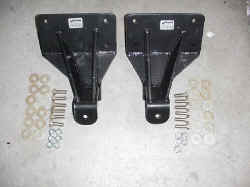
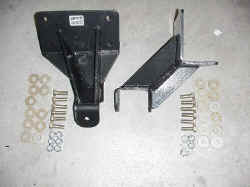
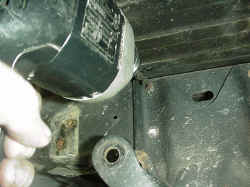
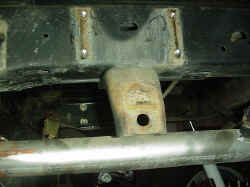
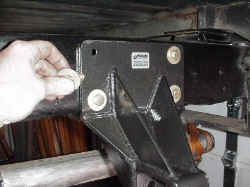
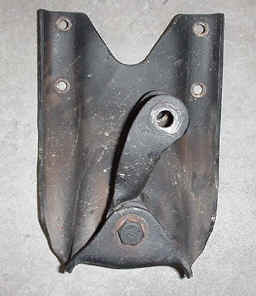
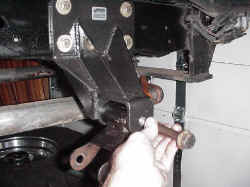
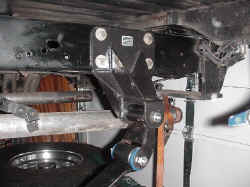

 Your Privacy Choices
Your Privacy Choices